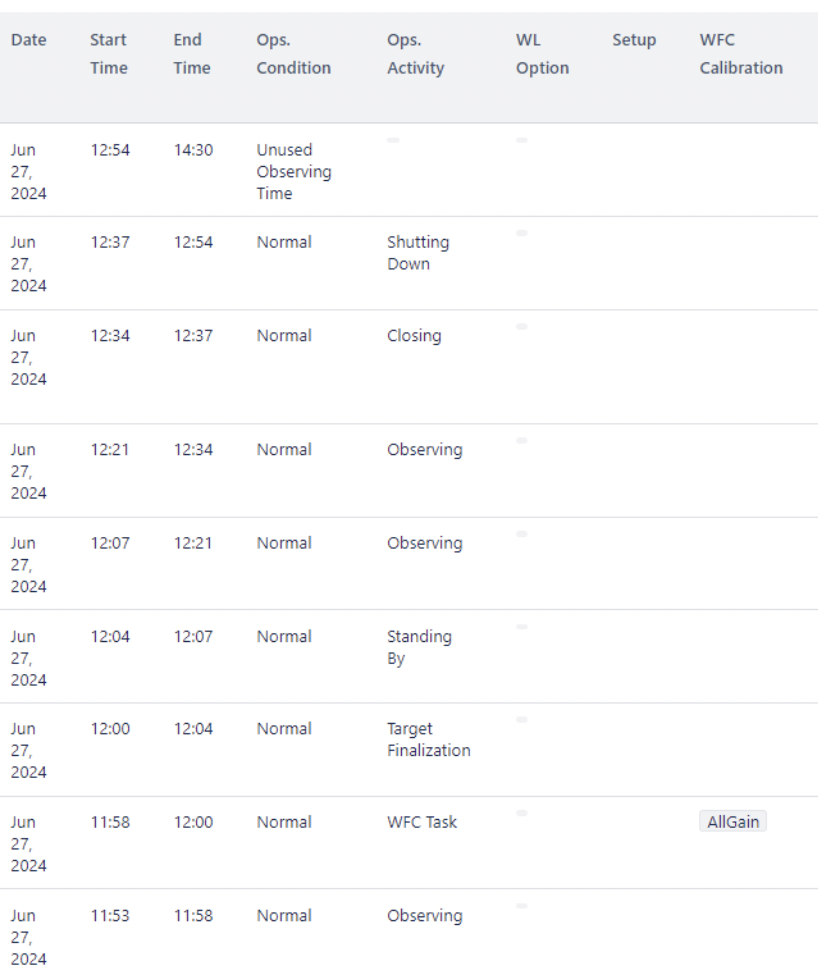Daily Activity Report Form
Over the summer of 2024, I interned at the Daniel K. Inouye Solar Telescope (DKIST) in Maui, Hawaii under the Akamai Workforce Initiative Program. My project was titled “Science Operations Specialist Group Daily Report Form Upgrade”, which focused on developing a GUI prototype and automated message queue for DKIST’s Daily Activity Report Form.


Why is this important?
The National Solar Observatory’s Daniel K. Inouye Solar Telescope is dedicated to studying the sun’s magnetic fields and dynamic behavior. These discoveries are all made possible with the help of the Science Operations Specialist (SOS) Group, who are responsible for operating DKIST and documenting hundreds of operations activities using the SOS Daily Activity Report Form. Although the current form is effective, it necessitates significant manual entries, posing efficiency challenges for the timely logging of observational data by the SOS Group.
Project Summary
This project aims to ensure efficient logging of daytime solar activities and operations by upgrading the SOS Daily Report Form through two phases. The first phase focuses on developing a prototype toolkit and graphical user interface (GUI) for the next generation DKIST Daily Activity Report Form. After determining whether native or web-based applications would be best for improving the form’s current user interface, the GUI prototype was decided to be built and tested using Confiforms for Atlassian Confluence. The second phase focuses on auto-populating log information using an observing event message queue provided by DKIST’s high-level software group. Integration of this phase involves enabling communication between the GUI prototype and a DSSC machine using RabbitMQ, a message-queuing broker software. This process runs on Oracle VirtualBox using the Ubuntu Linux operating system and coded in Java.
My Contribution
I was responsible for all aspects of the project from start to finish. However, throughout my project, I received guidance from my mentor, who works as a Science Operations Specialist at DKIST. I also worked with a DKIST High-Level Software Engineer, who helped me produce the automated message queue system using Java. My project can be broken down into four main stages: 1) Research, 2) Feedback, 3) Prototyping and Integration, and 4) Message Automation.
Research: To start, I researched whether native or web-based applications were best for implementing the new GUI prototype. In the end, I settled on the web-based application, Confiforms for Atlassian Confluence. Since the existing Daily Report Form already resided on Confiforms, it would be easier to implement my GUI alterations. This also means my alterations wouldn’t clash too much with the pre-existing Javascript code developed by one of the SOS Group members.
Feedback: Next, I received feedback from the SOS Group to gather their thoughts, opinions, and concerns with the current Daily Report Form. I asked about what improvements they would like to see, what issues they run into, usability of UI navigation, and what features they would like more automated.
Prototyping and Integration: Using the SOS Group’s feedback, I honed down on the most frequent concerns, which mainly addressed the manual time entries and time inconsistencies, and began developing my GUI prototype on Confiforms. In the previous form, start and end times for telescope observation activities were logged manually. To address this problem, I implemented checkboxes that automatically inputted the “start time” and “end time” in HST. I also added a checkbox to move the current “end time” to the “start time” to mark a new form submission. Additionally, the previous form did not flagging time overlaps and inconsistencies, so I implemented a CSS indicator that would highlight the form submission as red if the end time was greater than the start time, or if both times were the same.
All of these UI changes were integrated into the official Daily Report Form and were tested by the SOS Group. The next generation form will be presented at the next DKIST Observing Campaign:

Checkboxes for time auto-population

CSS indicators for time inconsistencies
Message Automation: Finally, I worked with the high-level software (HLS) team to build an automated message queue system that grab messages from separate GUIs and automatically inserts them as specific entries in the Daily Report Form. Currently, when the SOS Group submits a form, this data is sent to a computer called OCS, which then sends the data as a JSON payload to another computer called BAKER. To facilitate communication between these two computers, we need a message broker software called RabbitMQ. By editing and running Java classes provided by the HLS team, I was able to create a connection to RabbitMQ via the localhost instance, send messages to RabbitMQ, and store these messages in the dkist.observationLog queue. I then processed these messages as a JSON payload and sent them to the official Daily Report Form in Confiforms using a REST API.
The Java source code can be accessed here.
My Learning Experience
This project has taught me so much about both the front-end and back-end aspects of web and software development. From start to finish, I went through the entire process of researching web applications, designing and implementing UI features, prototyping and testing GUIs, and developing code to communicate between separate machines via REST APIs. I had the opportunity to work alongside real world professionals and experience what it was like to work a STEM-based career. Doing this project has solidified my interests in UX/UI design and has further motivated me to continue pursuing computer science as a profession.